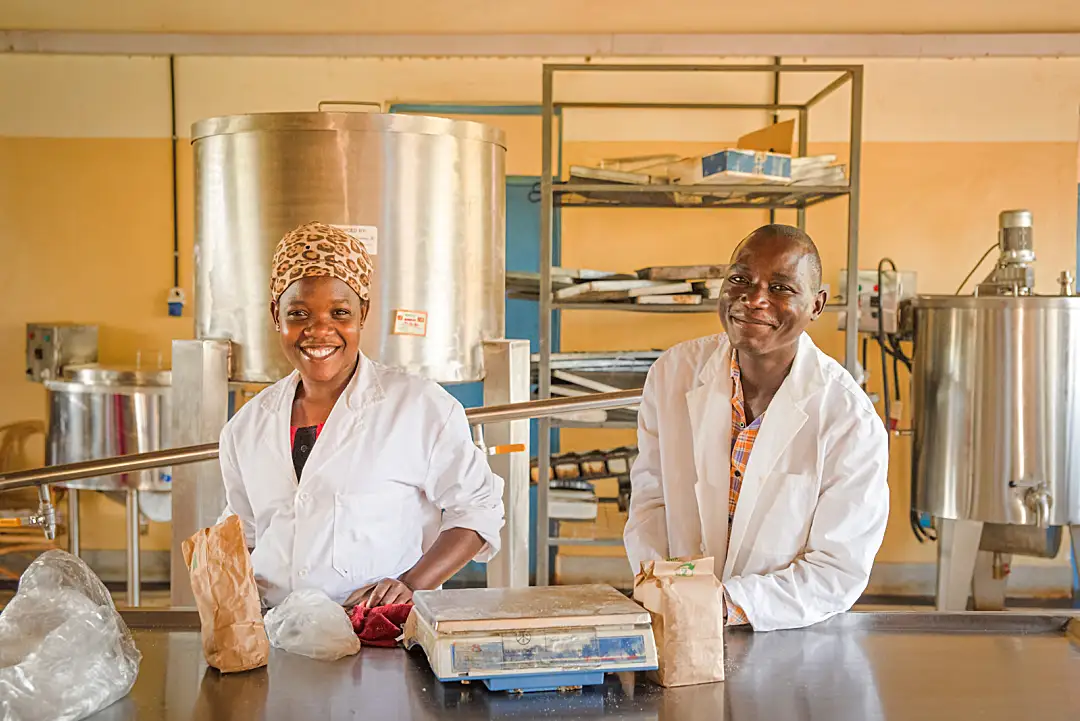
Photo credit: Katie G. Nelson for RTI International
The U.S. Agency for International Development (USAID) recently celebrated the five-year anniversary of its first Private Sector Engagement Policy – a milestone that has me reflecting on my own journey with private sector engagement (PSE) and what’s next and needed for this important approach to international development.
I joined USAID’s private sector team in 2007 when it was focused on trying to shift the agency from doing stand-alone partnerships that celebrated the financial resources leveraged from the private sector to thinking of PSE as a critical and integral approach to achieving development results. My own PSE “aha moment” happened around this time when I was on a 5-month rotation with the USAID Mission in Indonesia. I was surprised to learn that the Mission’s Environment Lead advocated for collaborating directly with companies on deforestation issues – even if they were the same companies responsible for that practice.
Meaningful PSE to Advance Development Goals
I began to understand how USAID’s activities to stop deforestation wouldn’t make a big difference until those corporations changed their business models, given the relatively small footprint of USAID projects compared to that of these companies. USAID could use its convening power and ability to offer a neutral platform to bring together community, government, and business to collaborate in addressing these larger challenges. It could also offer to co-invest with companies and provide technical expertise to incentivize them to develop new business models and forest-positive practices. In doing so, USAID would still be laser focused on its development goal (reducing the rate of deforestation) but would be able to achieve results at a much greater scale.
Despite a growing embrace of PSE, international development often suffers from a “magic wand” mindset. We believe deeply and passionately in the issues we work on and assume the private sector will show up and meet us on our own terms simply by invoking their name. We are frustrated when they don’t or when activities built on this assumption fail.
We need to refine our mindset and practices around effectively engaging the private sector. We need to be curious and intentional about the private sector’s involvement and take the time to explore the business incentives and reasons for why the private sector would engage on a development issue. Often there are critical roles for the private sector to play, but we need to make sure those roles make sense for them and allow them to do what they are good at. When we get it right, sustainability and scale will follow.
5 PSE Principles for Greater Effectiveness
Reflecting on my more than 20 years of experience in this space – and where I’ve seen RTI get the most traction with the private sector in our USAID-funded activities – I’ve identified five critical aspects to doing PSE well. When we employ these principles, we are more likely to foster opportunities where the private sector can play a meaningful role in addressing development issues.
1. Be curious
PSE starts a conversation. We need to hear from a range of private sector actors to understand their business models and motivations as well as the challenges and opportunities they are prioritizing as they look to secure and grow their businesses. I often meet people in the private sector who are surprised when I ask them what development challenges and opportunities impact their operations. Activities like landscape analyses in the Asia Pacific region, an off-grid solar forum and expo in Africa, and political economy analyses have helped RTI more intentionally and proactively incorporate a wide range of private sector perspectives into development projects. These activities also remind us that the private sector is not a monolith, and we need to segment it by different types and motivations, from multinational corporations to industry associations, local and regional small- and medium-sized enterprises, and more. We also need to foster a sense of curiosity about the private sector among local public sector actors. For example, the USAID Expanding Water and Sanitation Project facilitates more direct dialogue, deliberation, and information exchange among local governments, service providers, and private entities in the water, sanitation and hygiene (WASH) sector in Zambia.
2. Find the alignment
As we have these conversations to deepen our understanding of private sector actors, we are listening for where their challenges and opportunities overlap with our development aims. This overlap often creates the most interest and potential for partnering, particularly when we are clear about the development and business benefits. This “shared value” is critical for successful collaboration. The possibilities are virtually endless when we take the time to be intentional about finding alignment, from improving nutrition and resilience in Ethiopia to energy security in the Caribbean and education improvements in the Philippines. When this value isn’t well understood, we develop a business case to show private sector partners how their involvement would benefit them. For example, the USAID Guatemala Low Emission Development Project collaborated with the palm oil industry to sign a deforestation commitment by showing palm oil producers that if they didn’t demonstrably reduce deforestation, they risked losing market share to other Latin American countries and competitors as the demand for sustainably produced palm oil grew.
3. Focus on relationships
Partnerships are, at their core, made up of and about people. A study I led while at USAID found that incremental improvements in relationship health were linked with incremental improvements in the performance of partnerships between USAID and the private sector. Within the USAID projects that RTI implements, we strive to assign a technical person as the relationship manager for key private sector partners to build trust and collaboration. As trust grows, we’re also able to influence the private sector to take a more proactive role in development solutions and build their capacity to do so. Trust and collaboration are also needed between public and private actors. Through the USAID ReachHealth Project, we connected local government units with local private sector organizations to fill critical gaps in health services for Filipino families. And in Senegal, through the USAID Governance for Local Development activity, collaboration among citizens, civil society, government, and the private sector improved service delivery and financing for health, education, and WASH.
4. Demonstrate value
Private sector collaborations take significant time and energy and need to show a return on this investment. All parties should get something out of the engagement beyond what each could do on their own. One example is how neglected tropical disease programs have helped establish efficient and effective channels for distributing private medicine donations to ensure treatment reaches those most in need. In doing so, they help companies meet their philanthropic commitments in ways that improve global health. Before entering any opportunities with the private sector, our teams ask the question, “if not for our support, would this private sector actor do this at all or as soon?” In the case of the Feed the Future Senegal Naatal Mbay activity, collaboration with banks and insurance firms led banks to develop agricultural loans that included insurance as a requirement. The resulting rapid and sustained scaling of agricultural insurance across the country would not have happened without the project’s support. As private sector partners experience these positive, tangible results, their interest and engagement grow in bringing business solutions to development.
5. Plan for transitions
Staff transitions can derail partnership progress, so we need systems for smoothly transitioning relationship management without disrupting momentum. This includes ensuring multiple points of contact among project and partner teams; documenting partnership vision and decision points as well as key insights about the private sector partner; and holding relationship handover meetings if any key contacts leave. We also pay attention to any relationships the project facilitated to ensure we aren’t the critical bridge between those actors. One way to do this is through social network analysis. Similarly, partnership exploration should include conversations about the role the private sector will continue to play after any project support ends.
Private Sector Engagement with a Purpose
More effective and impactful PSE requires us to consult frequently with a range of private sector actors and think deeply about the appropriate roles for them around a specific development issue within a specific system. At RTI, we are embedding the five principles above into our programs to enhance the way we think about and engage the private sector.
As USAID continues to modernize and institutionalize its approach to PSE, I’m hopeful that the development community will also continue to home in on and prioritize principles and lessons learned that can help us be more attune to the business-driven considerations of the private sector. This will help us figure out how to harness, leverage, and tap into those considerations in more meaningful ways that benefit development. It all starts with a conversation to unleash the power of business to create commercial and development benefits.
